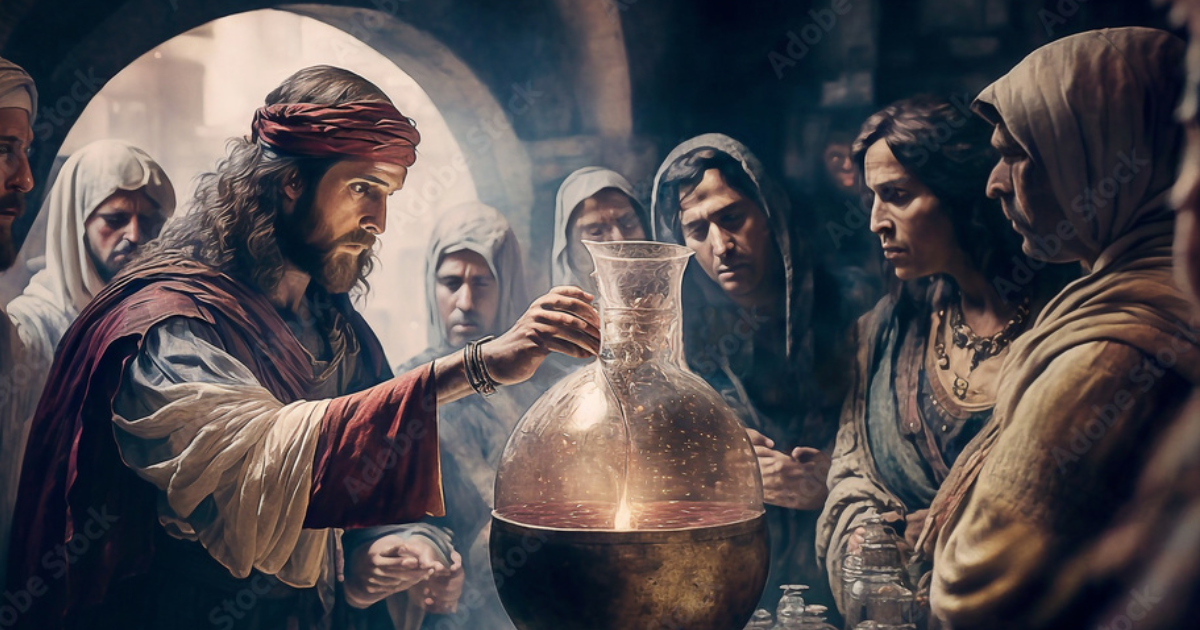For centuries, there have been debates on the location of where Jesus had performed his miracle of turning water into wine. According to the Gospel of John, the miracle happened at a wedding at Cana, Galilee.
As everyone already knows, Jesus was at the wedding with his mother when Mary noticed that there was a shortage of wine. Jesus then intervened and used his divine power to turn water into wine.
As reported by The Irish Star, “For 2,000years, scholars and the faithful alike have pondered over the true site of this Biblical event. Yet, now, archaeologists are convinced they’re hot on the trail of the historic location.”
As per Daily Mail, the digging site used to be Khirbet Qana, “a Jewish settlement active from 323 BC till 324 AD” and several compelling pieces of evidence have emerged. Express has reported that the team behind this excavation has uncovered an underground network that shows signs of early stage Christian worship marked with crosses and signs that say ‘Kyrie Iesou,’ which is a Greek invocation for Lord Jesus.
Other items that are found at the site include an altar and remnants of what seemed like the remains of a stone jug. These hinted at the possibility of marital ceremonies being held there, which of course suggests that the wedding mentioned in the Gospel of John might have taken place here.
Dr Tom McCollough, who led the excavation, admitted that there are three other potential sites that hold the possibility of being the place where Jesus had performed his first miracle. However, he added, “But none has the ensemble of evidence that makes such a persuasive case for Khirbet Qana.”
He then mentioned, “We have uncovered a large Christian veneration cave complex that was used by Christian pilgrims who came to venerate the water-to-wine miracle. This complex was used beginning in the late fifth or early sixth century and continued to be used by pilgrims into the 12th-century Crusader period.”
Dr Tom McCollough also added, “The pilgrim texts we have from this period that describe what pilgrims did and saw when they came to Cana of Galilee match very closely what we have exposed as the veneration complex.”
View this post on Instagram
Talking further about his findings and how they make sense, the archeologist said, “When tourists visiting Israel today are taken to Cana, they are taken to Kafr Kanna. However, this site was not recognized as a pilgrimage site for those seeking Cana until the 1700s. At this point the Franciscans were managing Christian pilgrimage and facilitating easy passage rather than historical accuracy.”
He then added, “Our excavations have shown that this was in fact a thriving Jewish village located in the heart of much of Jesus’ life and ministry. For the Gospel of John, Cana is in some ways, Jesus’ safe place or operational center.
It is a place he and his disciples return to when they encounter resistance in Judea. I would argue our excavations warrant at least a reconsideration of the historical value of John’s references to Cana and Jesus.”
View this post on Instagram
With the findings of the site providing compelling evidence that hints at it being the place of Jesus’ first miracle, it now remains to be seen if the experts can indeed confirm the same.













